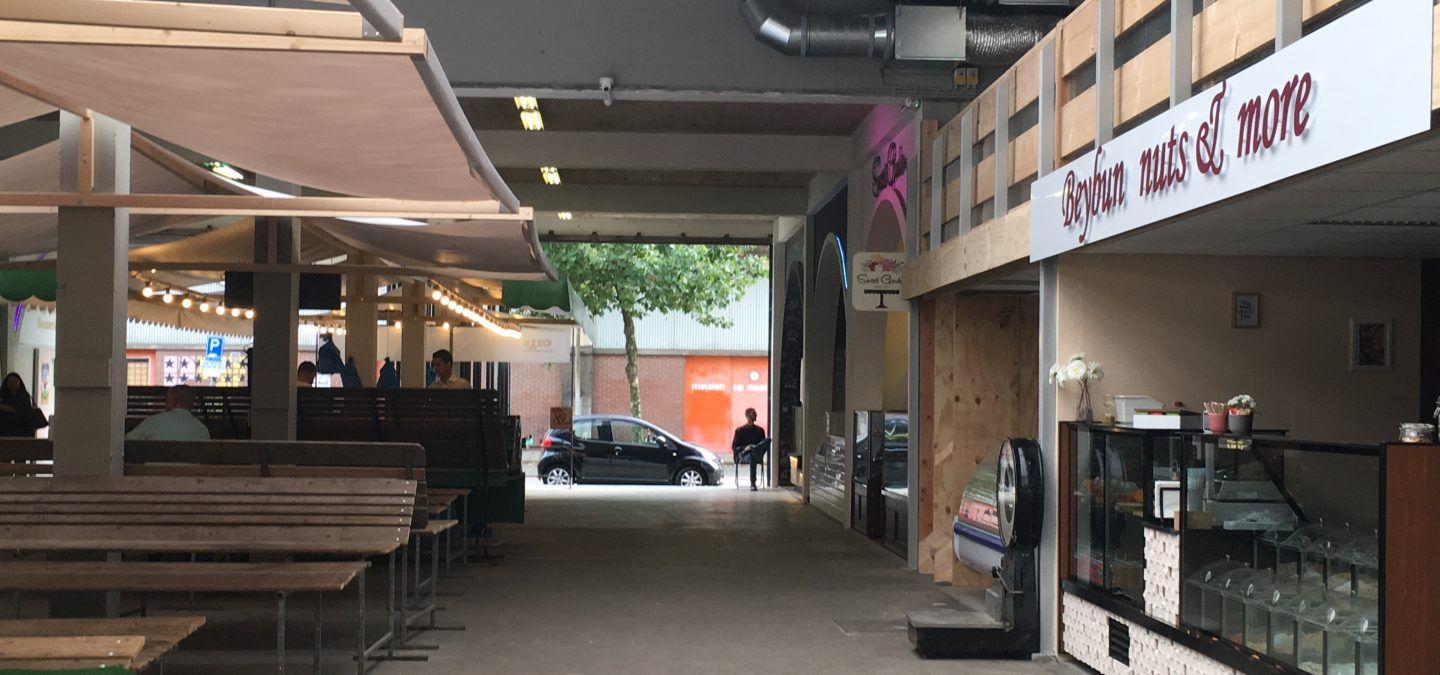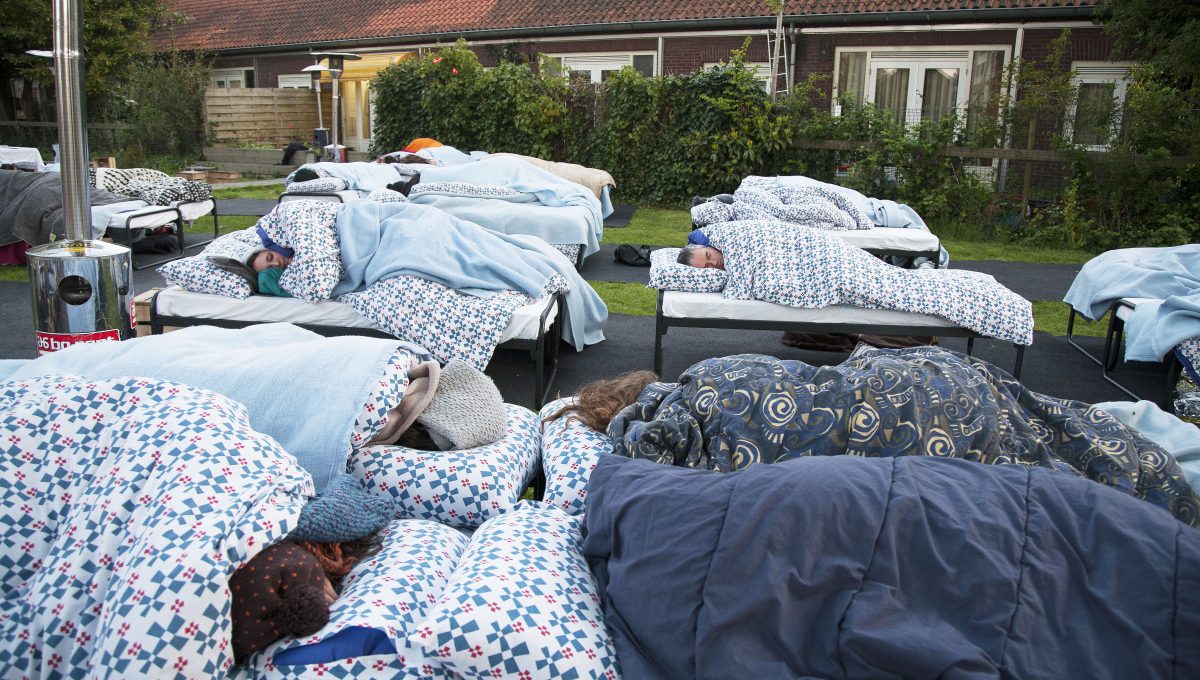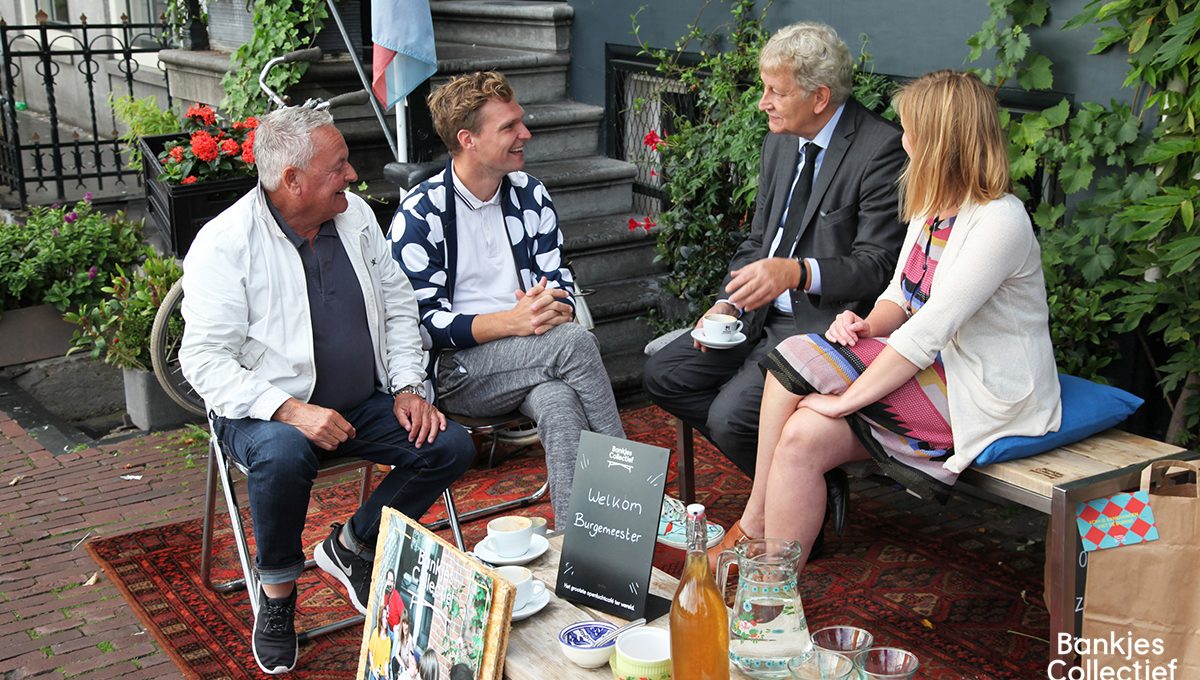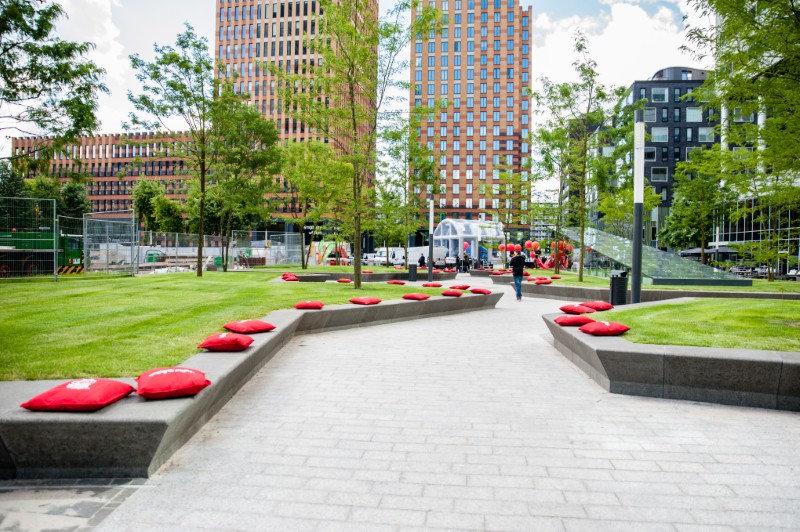
Keep up with our latest news and projects!

This book is a labor of love. The exercise of creating it is a very important one, and the lessons learned throughout the process come at an opportune moment given the emerging global conversations on placemaking. We believe the collective narrative will contribute greatly to the interdisciplinary conversations that will take place during Placemaking Week in October 2017 in Amsterdam, The Netherlands.
Last year was the culmination of many global gatherings to make public spaces, streets, public markets, and placemaking a fundamental part of the New Urban Agenda. The final draft of the New Urban Agenda mentions “public spaces” ten times, including the thrust of each of the key messages from the Future of Places conference series.
With Project for Public Spaces’ first global Placemaking Week, and our involvement in Habitat III, 2016 saw the Placemaking movement go global. As the conversation turns toward the implementation of the New Urban Agenda, placemaking is being seen as an indispensable tool to bring together the many causes and disciplines necessary to making our cities safer (especially for women and girls), healthier, more sustainable, more resilient, and more just.
 Hotel Schaffelaar ©Iris Vetter
Hotel Schaffelaar ©Iris Vetter
The Netherlands is unparalleled in its past success for placemaking, and is now poised to facilitate taking the global placemaking movement to a high level of impact. Often with strong roots in great places in the Netherlands, the Dutch are indeed working around the world to support placemaking. Many local partners of Placemaking Week Amsterdam were also involved in Habitat III, and more recently many helped lead a conference in Nairobi with UN Habitat on implementing the New Urban Agenda through placemaking.
We are inspired by the passionate placemaking processes we’ve been invited into over the last decade in the Netherlands, and especially by the numerous informal placemaking projects that have recently begun springing up throughout the region. One of the key questions we continue to ask ourselves is how some of these informal placemaking projects and networks, often led by early adopters we affectionately call “zealous nuts,” can be supported and scaled up in partnership with governments and developers. How the Netherlands develops successful practices, policies, and implementations, will be central to how “place-led development” can be transferred globally.
More and more, placemaking has been occurring “upside down”: starting with places and people, with more small scale, low cost, informal interventions. However, the impact is often limited. A real challenge and opportunity is to figure out how these interventions can also really “turn upside down” the way we participate in cities, the way we finance transitions, the way we do larger designs and think about
goverance structure.
The big question is how we also scale up the impact of place making? How can we build on the successes of momentum for “lighter, quicker, cheaper” interventions? How do these developments attract people, investment, and developers on the terms of these communities? They are going to be developed one way or another, but how do we really achieve place-led inclusive development?
 Burgermeester Eberhard van der Laan bij het Bankjescollectief ©Tom Baas
Burgermeester Eberhard van der Laan bij het Bankjescollectief ©Tom Baas
 ©️ Lotte de Graaf
©️ Lotte de Graaf
Placemaking should not be dominated by any one sector: successful placemaking is balanced between different sectors. There is room for leadership in several sectors and contexts; government, communities and private sector. In every part of the world one sector helps to lead placemaking, and we have to learn from that, as this leading sector often also is the most innovating. For example, in Australia and New Zealand, governments are progressive and they are doing a pretty good job. However, there is less leadership from philanthropy and community-based organizations. It is still government doing for others and not so much with them. Different phases of projects will bring about different tensions and the question is how governments can find a balance between the interests of all parties. One of the key lessons is that while communities certainly have the ability and knowledge necessary for effective placemaking processes, they often simply don’t have the capacity to do it on their own, without the help of local government, partners, and allies.
The placemaking process is a way to bring different actors together in a constructive, collaborative way, to draw on more resources, ideas, and creativity for shaping places. Placemaking is about engaging, challenging, and empowering, everyone to help shape the public realm, and subsequently their city, and their local economy. To do this we need to make everything about cities more open and porous, from the plinth and eye-level, to the planning process, to the access to resources for starting businesses and upward mobility, to governance. Not only will this make a better, more inclusive, and loved city, it will build the capacity of cities to take on any challenge.
There are great opportunities for growing models for scaling up and sustaining placemaking efforts. How do we develop place-led governance, financing, and design, that can scale up and how do we sustain the upside-down planning?
We strongly feel that it is through networks that these models are going to emerge and be best applied. There is so much learning to do and we need to make change happen faster by learning from and creating feedback loops. In the last five years, we have been creating a collective impact model with the Placemaking Leadership Council.
We have a network of over 1500 people right now and it is being broken down into groups of people focusing on regional efforts, citywide or national efforts, but also on crosscutting issues.
We need everyone to ask more, and bigger, questions and to realize that it is never one discipline’s job to do placemaking alone. How can we engage and challenge everybody to be part of placemaking. We all have to show more leadership and responsibility. That’s also where the new models of place governance come in.
Interested? Join The City At Eye Level and share your story!
Discover moreWe really appreciate the great generosity of the Netherlands, its cities and people, in sharing what they are learning themselves. This book presents numerous case studies whereby people have been remarkably open in their successes and struggles. We also appreciate the generosity STIPO has offered with creating this book, hosting the conference together with The City at Eye Level, Placemaking Plus and Pakhuis de Zwijger. We are very lucky to benefit from the openness the Netherlands is offering to us, and placemakers everywhere to learn from each other and work together. We are confident that this event will create a foundation for us to collectively realize our potential to implement placemaking globally.